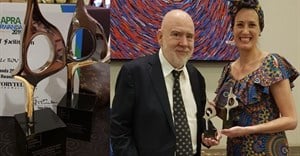
Subscribe & Follow
Jobs
- Social Media Specialist Johannesburg
- Advertising Specialist - Get It Magazine Durban Durban
- Advertising Sales Executive Sandton
- Art Director Sandton
- Senior Working Art Director / Designer Johannesburg
- Senior Account Manager Cape Town, Johannesburg
- Junior Account Manager Cape Town, Johannesburg
- Copywriter Cape Town
- Ad Traffic Intern Cape Town
- Director of Creative Performance Cape Town
Integration: Business imperative or communications buzzword?
“The increased complexity of the modern audience demands integration for an effective marketing communications campaign.” Speaking on a panel at the first African Holmes Report In2Summit held in Johannesburg last week, Narayanan said that ultimately, integration happens when a group of people gather around a problem to solve. “It’s important that titles, disciplines, agencies and egos are checked at the door.”
The panel, titled “Collision – cracking the integration challenge’’ saw agency heads Kevin Welman (FleishmanHillard), CherylAnn Smith (WeCollaborate) and Microsoft’s Nir Tenzer come together to debate the topic. Smith, founder and MD at WeCollaborate, said that while barriers do currently exist, integration has to start internally. “We are still facing barriers and we will face them for some time. The understanding of integration hasn’t really landed where it needs to and that starts internally. A lot of what I find, coming from an agency and corporate background, is that integration happens a little bit in small areas and not consistently. From an internal perspective, the teams are incentivised internally across their silos. It doesn’t force integration – it keeps people separate.”
PR partner role
MD of FleishmanHillard, Kevin Welman said that integration calls for PR agencies to take a more central role, and partner effectively with other agencies. “The communications process should be led by the smartest people in the room that completely understand the business and look to communicate a business message, to affect change for the business. If you’re a really good communicator, you should be occupying a seat at this main table.”

Welman said that for integration to work, agencies need to ring-fence what it is they’re good at. “It’s important as an agency to understand what you do. And to understand what you do, you have to understand what you don’t do – and not be embarrassed about that,” said Welman. He referenced Harvard Business School lecturer Francis X. Frei: “In the service of great, know what you’re bad at.” “Identifying what you don’t do will allow you time to do the things you do well, better,” said Welman.
In terms of barriers, Smith commented that it’s human nature to not like change, “We don’t know what the outcome will be. Integration takes the right leader and it starts with basic fundamentals: internal culture, fewer emails, changing the way people communicate, detailing who’s responsible for what.”
Narayanan commented that there are three points to consider when trying to achieve true integration. The first is strategic and needs to be led by the client. “You need to ask yourself – is your client’s organisation, business and brand totally committed to integration? If the answer is no, then that is a problem.” The second consideration is cultural. Are you promoting a culture where egos and silos are left out of the room? It’s not about agencies; it’s about people and giving credit to ideas.
Brand experience
He said that the third and final consideration is about operational structure which includes team structure, ways of working and remuneration. “The client needs to invite people to come and work to solve a business problem, but ensure everyone is being paid fairly. That way agencies won’t need to fight to protect their P&L and get their piece of the pie, but rather foster a harmonious culture where people come together to solve a problem
“We easily forget that we are dealing with people and the social customer is the person that doesn’t look at a billboard or tweet in isolation; they are having a brand experience and so fundamentally when starting a strategy you need to address what kind of brand experience you want to create,” said Smith.


















